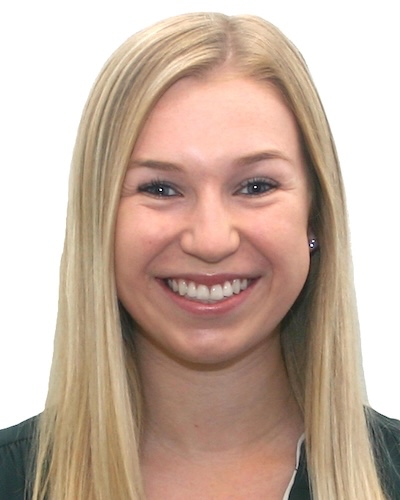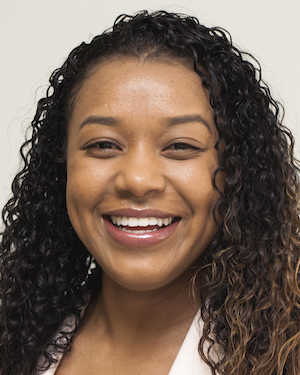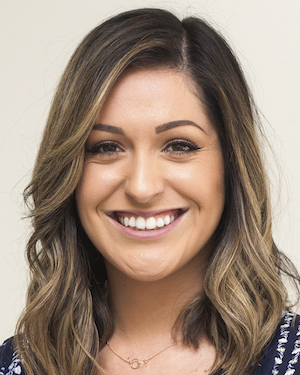Student Blog

To do, or not to do . . . the OTD ⟩
November 27, 2018, by Antonietta
With OT moving in the direction of an entry level doctorate, you might be one of the last groups of OTs deciding whether to elect to pursue the D! I obviously chose to, but I still considered a number of things. Some were more practical, like I knew it was unlikely that I would come back to school for a third time to do it later and I qualified for the accelerated acceptance to USC’s program with advanced standing. But some were more esoteric. Reflecting on the experience of making that decision, I created a list of things I considered. I did not have specific answers to each one, but I was excited about this type of question.
- What practice area or deep interest would you like to focus on during this experience? Remember a practice area can be a clinical setting but also research, policy, administration, program development, or education.
- Does doing projects like a literature search about the population needs and best practices in the area of your proposed residency excite you?
- Are you interested in current issues in OT and critically problem solving how to address them?
- Are you interested in blazing the trail for the future of occupational therapy and being a leader in the field?
- What sort of experience do you want your residency to be and what are you hoping to get from it as well as from your faculty mentor at USC?
Doing the OTD at USC differentiates your level of commitment to your education. It will set you apart from other applicants because you will have gained above entry level clinical skills, done in depth work in an advance practice area, developed a meaningful program, done ground breaking research, contributed to discussions around policy and administration, and/or developed your skills to educated the next generation of occupational therapists. You will have honed your leadership skills and be set on the path to be a leader in our field.

⋯

Gratitude Attitude ⟩
November 26, 2018, by Jessica P.
Coming back from Thanksgiving break, I always have such an appreciation for some of my favorite things in life: family, food, friends, and football. This time of year it is so nice to take a step back and remind myself of everything I have to be grateful for, especially for having the opportunity to pursue the career I love (occupational therapy, duh!) at the best university, USC!
This semester has truly been a whirlwind, full of making plans for the future and slowly coming to terms with the fact that I only have one semester left as a full-time student in the master’s program. It can be easy to get caught up in applying to different OTD residencies or figuring out where to go for my leadership capstone externship next semester, but at the end of the day I always know that I am so lucky to have found this profession.
In one of my undergraduate classes on performance science, Dr. Glenn Fox discussed the power of gratitude and it has always stuck with me. Some people choose to practice gratitude by making a written or mental list at the end of each day of a few things that they’re thankful for or they may practice through larger gestures, such as getting a loved one a gift. For me, the best way I practice gratitude is to always have a gratitude attitude. I try to remind myself moment to moment to be thankful for everything, instead of being caught up in the small details. That being said, as an OT student this is what I’m currently most grateful for.
My group members
In two of my classes, a majority of the coursework is done amongst groups. I have been blessed to have gotten the best group members who make even the longest days enjoyable! From sending friendly texts to bringing each other snacks, my group members always go above and beyond.

Cohort B
I know, I know — everyone says their cohort is the best but let me tell you, my cohort actually is THE best. My cohort has been the best support system throughout this program. From planning potlucks on weeks where we are all a little run down to staying after class to help each other practice transfers to even planning weekend handball games, my cohort truly does it all.

Student Ambassadors
I am so lucky to be a part of the wonderful student ambassador team. While I love giving tours to prospective students and being a part of information sessions, my favorite part of this job is my amazing co-workers!

⋯

Health and Wellness . . . with a little Cardi B ⟩
November 20, 2018, by Serena
What does a USC OT graduate school class look like? Well let me show you . . .
In our program, it is truly all about work-life balance. As we near finals, our Health and Wellness Professor, Dr. Dieterle created an activity that allowed us all to engage in a novel or relaxing occupation while in class. My classmates and I had the ability to choose two activities to participate in for our 2 hour class. The options were salsa dance, meditation, Yoga, or arts & crafts. As you can see from the video, I selected salsa dance led by two OTD students and a meditation seminar led by Dr. Payne.
In the salsa dance class, the OTD students taught a partner routine. Then we all performed the routine with a partner. My lovely partner of the day was Melissa. Once we became familiar with the routine, we then switched partners so we danced with nearly every person in the room. I was incredibly impressed by my very talented classmates. The OTD students were taking song suggestions (very client-centered) so I requested “Mi Gente” (the remix of course with Beyoncé), “MIA” by Bad Bunny featuring Drake, and “Taki Taki” by Dj Snake featuring Selena Gomez, Ozuna & Cardi B. We also took it back to the early 2000s and listened to “Beautiful Liar” by Shakira and Beyoncé. However, the song of the day was “I Like It” by Cardi B featuring Bad Bunny & J Balvin.
Well now that I have laughed and released some stress in the Health and Wellness course, its time to get back to studying for finals!
⋯

My SChedule ⟩
November 17, 2018, by Jessica P.
Classes Fieldwork School/Life Balance
As an ambassador, one of the most common questions I get from prospective students is “what does your typical schedule look like?” Along with this, people ask if there’s time to work, time for self-care, and balance in your weekly schedule. My fellow ambassadors, Joyce and Evan, recently discussed working and having a baby in grad school. From my personal experience, I think it all has to do with balance.

My Fall 2018 schedule
Throughout the program, it is typical to be in the classroom 3 days a week, 1 day in fieldwork, and 1 day off. For the days that we’re in the classroom, it is normal to have class 9am-12pm, a lunch break 12pm-1pm, and then class again from 1pm-4pm. For many people, like myself, a three-hour class may sound daunting, but it’s not. Luckily, all of our professors give us breaks with plenty of time to grab coffee, snacks, or simply take a quick walk outside to get some fresh air. Most of our classes utilize team-based learning, meaning that we usually are not getting a lecture for the entire class time. For example, in my Adult Physical Rehabilitation course we spend class time doing hands-on case applications where we apply what we have already studied on our own.
Everyone’s fieldwork hours will be slightly different, as you will follow whatever hours your clinical instructor works. The hours occupational therapists work may look different in the various settings. For example, my pediatrics level I fieldwork was 10am-6pm as many of our pediatric clients were coming after school. This semester, I just finished my last level I fieldwork at an outpatient lymphedema clinic where my hours were 8am-4:30pm.
As a student ambassador, I have the privilege to work 10 hours a week for the division doing various tasks and events. I have found working 10 hours per week is manageable, but it is something I have to plan for. I know that I have weekly quizzes on Tuesday, so on Sunday’s I study for my quizzes instead of cramming late on Monday night. Many of my classmates also work around 10 hours, doing other student worker positions at USC, such as being classroom assistants or research assistants. We probably would all agree that working that amount is doable, but anything more than that could be stressful on top of your coursework.
One of my favorite days though is my day off. While I love being in the classroom and at fieldwork, I depend on my day off to recharge and prepare for the upcoming week ahead. By having a day off, I think it really allows us to have a balanced schedule with time to have doctor’s appointments, work, catch up readings, etc.
Throughout grad school, there will definitely be weeks where it can feel overwhelming. My best advice is to listen to your own body and what balance looks like for you. You may need a full 8 hours of sleep while some of your classmates seem to fully function off of only 5 hours, but always listen to what is best for you. Transitioning to grad school is definitely a transition into a new role in life, but once you get a hang of the schedule and what works for you — you will own it!
⋯

Financing USC: What You Need to Know ⟩
November 16, 2018, by Melissa
As we’ve gotten closer to the application deadline, one of the questions I’ve gotten the most concerns paying for USC and whether the “financial burden” is worth it. Thus, I wanted to take the time to give you guys some insight as to what my thought process looked like when I was applying, and why I feel like coming to USC was the best decision I’ve ever made.
First of all, I want to validate your concerns and let you know that it is completely normal to be intimidated by the cost of tuition at our program. It is more expensive than most programs, and it may feel like a lot to take on. However, I think it’s important that you know what your financing options are before you make a decision. I will admit that to me, it was a bit of a no-brainer. Despite the fact that I was intimidated by the cost of the program, that intimidation was offset by my excitement to be a part of USC Chan. Our program is known to be a leader in the field of occupational therapy, and I truly wanted to be a part of that. In addition, my fears were further ameliorated when I attended an information session and learned more about the aid USC offers, as well as the Federal Loan Forgiveness Program (which I will talk more about below). I was happy to know that I had options, and that made my decision far less daunting, which is why I want to share that information with all of you!
Jessica, a previous Student Ambassador, wrote a “Financing USC” blog series which consists of a couple of blog posts outlining how you can pay for the program. They include information on federal loans available to graduate students and the Loan Forgiveness Program, division scholarships and research assistantships, and student worker positions! Student worker positions are a great way to get involved in the division, and they include the Student Ambassador position that I’m in right now! I also work as a research assistant for one of the many research studies currently being conducted by the division, which is a great opportunity students have available to them as well.
Lastly, I want to talk to you a bit more about the Public Service Loan Forgiveness Program available to students that have taken out federal loans and work in a non-profit setting after they’ve graduated. This program requires that you make 120 payments towards your loans (which is about 10 years), and then waives or “forgives” the remaining balance after you’ve made those payments. Examples of non-profit settings include — but are not limited to — hospitals, some outpatient clinics, and even universities. As OTs, there is a high chance that we may end up working at a site that is considered a non-profit, which means we can qualify for this program! I do want to add that this program only waives federal loans, and not private loans that have been taken out in addition to federal ones.
I highly encourage prospective students to weigh their options before making a decision, and not to let the finances intimidate you from applying/attending USC. After being here for the last year and a half, I truly feel like I made the best decision coming to USC, as the education I’ve received is of the highest caliber. In addition, I have had access to professors and clinicians who are leaders and innovators in the field, which has been instrumental in my own career development. Just know that you have lots of options, and I would be happy to talk to you guys about this further if you have any other questions or concerns!
⋯





